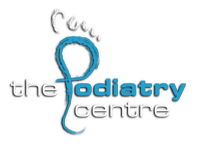What is dry needling and how it can help you?
What is Dry Needling?
Dry needling is an effective and efficient technique for the treatment of muscular pain and myofascial dysfunction. Dry Needling is a form of intramuscular stimulation, a technique developed by Dr. Chan Gunn in the 1970’s and is extremely effective for relaxing overactive or excessively tightened muscles, which contain what we know as “knots”.
Muscular knots are scientifically known as myofascial “trigger points”. Technically speaking, there are no physical knots within muscles, but science defines a trigger point (TrP) as a small area within the muscle band that is very tightly contracted (shortened), an isolated spasm. These small areas have altered blood supply, which irritates the muscle even more. The presence of multiple trigger points with a muscle belly causes pain and dysfunction on varying levels.
In simple terms, the treatment involves needling of a muscle’s trigger points without injecting any substance, hence the term “dry” needling.
The approach is based on Western anatomical and neurophysiological principles. A lot of the time it is confused with the Traditional Chinese Medicine (TCM) technique of acupuncture. However, since the same filament needles are used in both dry needling and acupuncture, the confusion is understandable. However, the difference is that dry needling uses the same needles as acupuncture however to treat the musculoskeletal and nervous systems based on modern neuroanatomy science and Acupuncture uses traditional meridian lines (meridians are based on a 2000-year-old philosophy).
How does Dry Needling work?
The exact mechanism behind the therapeutic benefits of Dry Needling is still not understood, but what we do know is that there are mechanical and biochemical effects from Dry Needling. Based on the studies by researchers at the National Institutes of Health, we know that inserting a needle into trigger points can cause favorable biochemical changes, which assist in reducing pain. Some of these changes include an increased blood supply to the affected area, which promotes healing and brings nutrients to the muscle for replenishment.
It is essential to elicit so-called local “twitch” responses, which are spinal cord reflexes. Localised twitch responses with dry needling are the first step in breaking the pain cycle.
A series of Dry needling sessions should be performed on a weekly basis for a few weeks to see and feel the benefits of the treatment. A booster session about 6-7 weeks after the initial set of treatments is also recommended in order to keep the therapeutic benefits going.
We advise that for up to 48 hours after a dry-needling session, you do not partake in intense physical exercise and keep very hydrated (with water and magnesium supplements).
What are the benefits of Dry Needling?
- Pain Reduction
Overtime, several studies have demonstrated immediate or short-term improvements in pain or disability by targeting trigger points with dry needling
- Improvement in range of motion
Research shows that patients undergoing dry needling therapy, in conjunction with movement-based therapy, experience more fluid movement. When trigger points are released within muscles, the shortened (tight) muscle band becomes longer, hence allowing a greater range of motion within the muscle belly.
- Speeds up the recovery (healing) process
Patients who undergo dry needling therapy experience less pain quickly; in fact, most patients feel the benefits immediately after their first treatment. This is due to the fact the dry needling enables increased blood flow to the affected area. Blood flow brings essential micronutrients to the area, which are needed for oxygenation and healing.
In Podiatry we are able to dry needle and provide relief for:
- Lower back pain
- Heel pain
- Tight/sore calves
- Tight Hamstrings
- The feet (when nerve pain or heel pain is present)
- The big toe (E.g. patients with painful bunions)
- The knee
- The thighs (when the hip muscles are excessively tight)
- The toes (when patients have clawed or hammer toes)
…. And much much more.
Are there risks involved with Dry Needling?
As with all forms of medical intervention, yes, there are risks with dry needling, although they are very very small. These include small bleeds, broken needles, infection or excessive drowsiness. However, within the scope of podiatry, most of the time these side effects rarely occur.
- Dry needling is a very safe treatment. We are trained in using a ‘clean’ technique, and only individually packaged, single use, sterile needles are used.
- The needles are very fine (0.16-0.75mm), and very rarely does any bleeding or bruising occur at the insertion site.
- Many clients report some soreness in the treated area and referral zone lasting from a few hours to two days – this is a normal part of the treatment and is part of reaching the therapeutic benefit.
If you are interested to know more about dry needling, don’t hesitate to see us.
Dr Jessica Shehata (Podiatrist)
